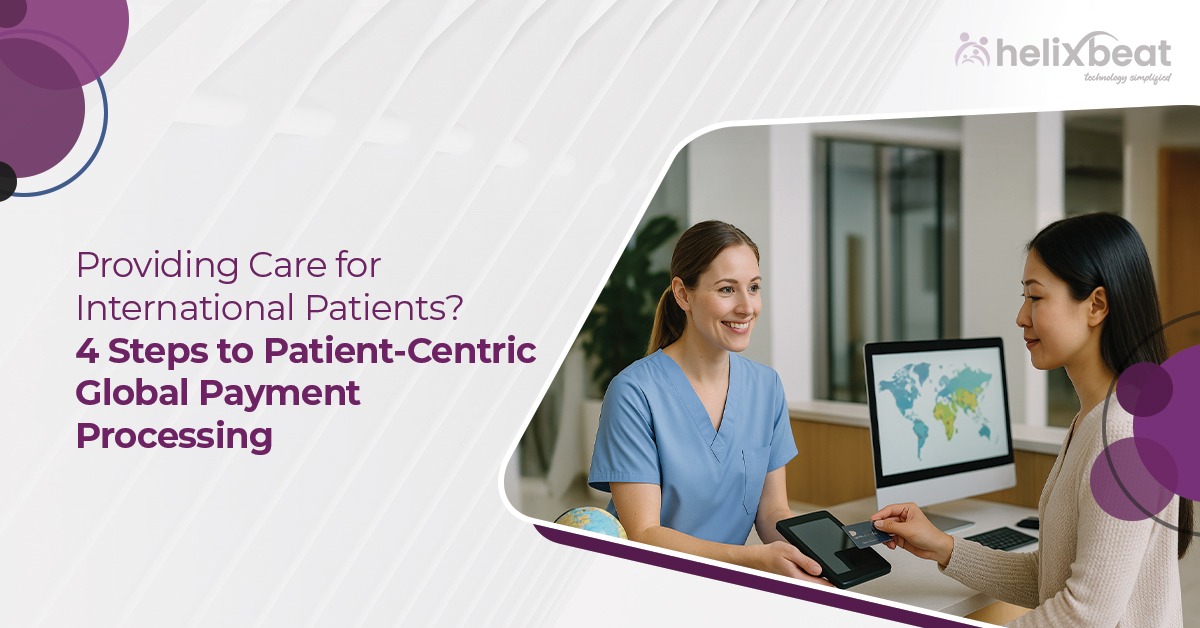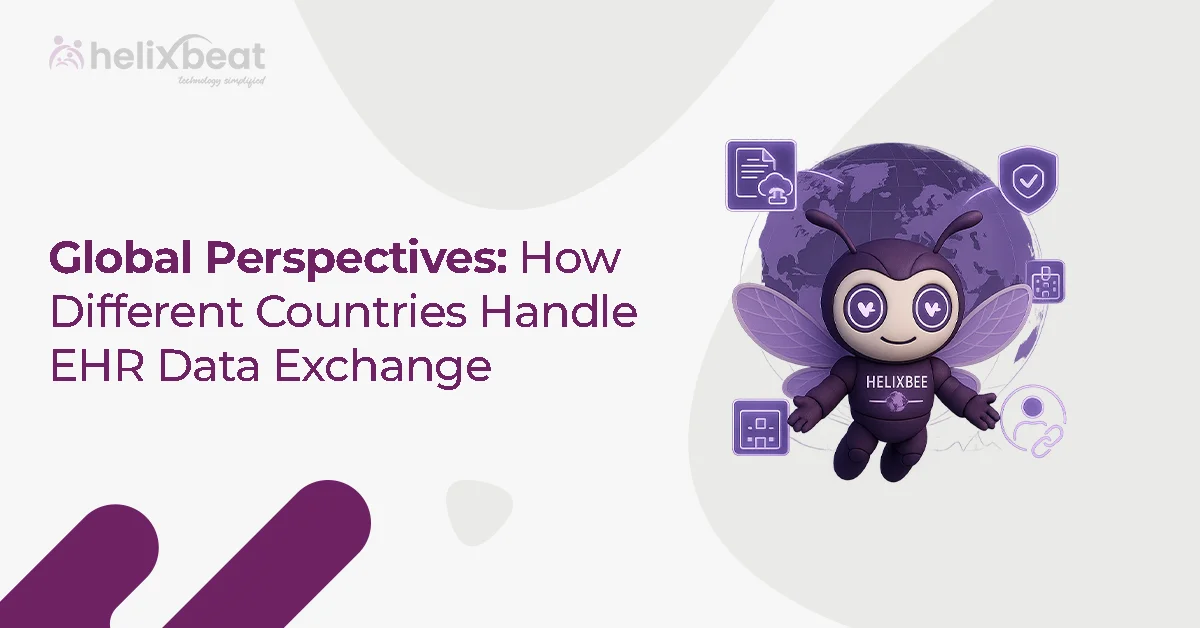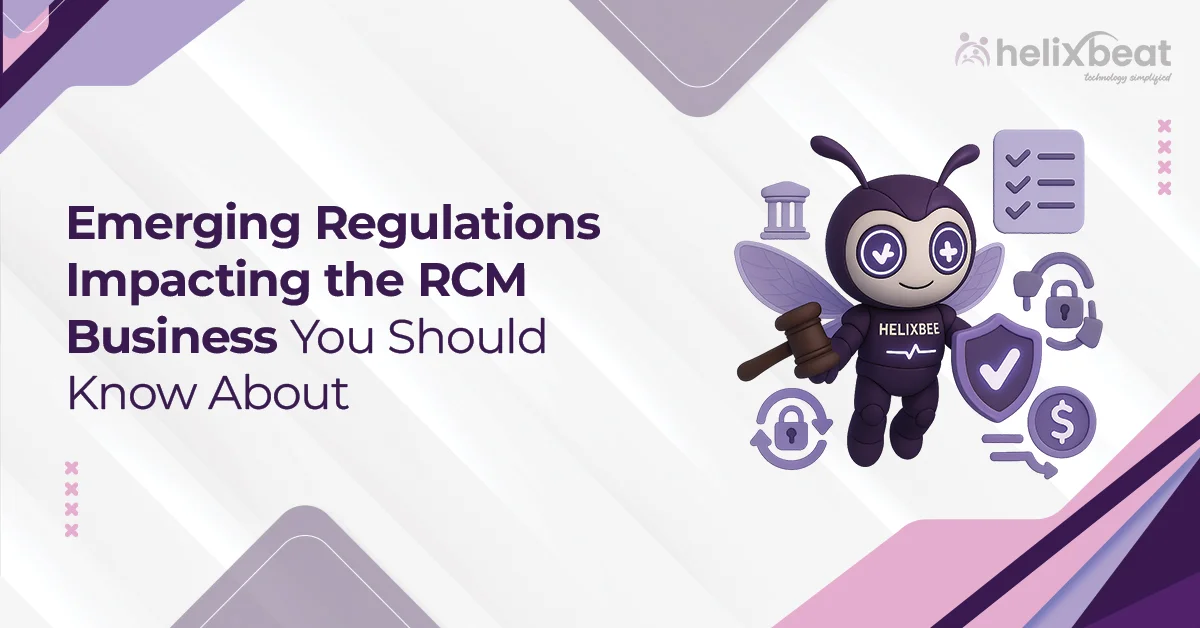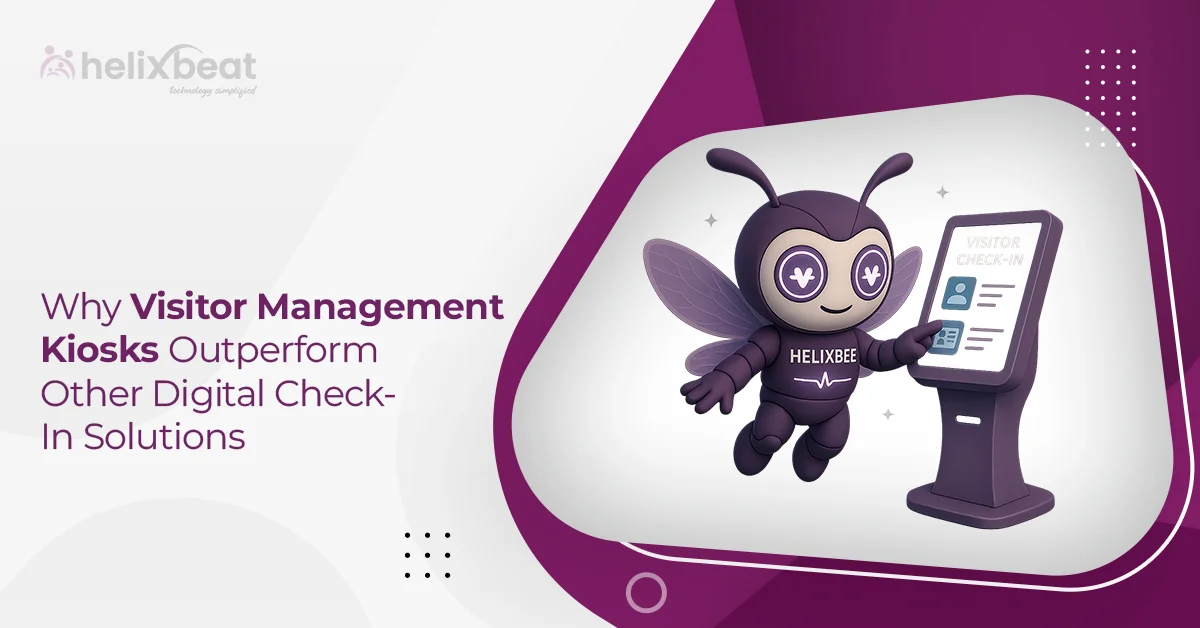In today’s globally connected world, treating patients across borders has become the new normal. International consultations, medical tourism, and remote care all offer exciting growth opportunities—and bring in more revenue for healthcare providers. But while care delivery has gone global, many global payment processing still stuck in the past.
Healthcare providers often face challenges like high transaction costs, payment friction, currency conversion issues, delays, and lost revenue. Many clinics rely on generic platforms like PayPal or Stripe, which are not designed for the complex and regulated nature of medical payments.
That’s where PAYNOVA steps in—a solution exclusively built for healthcare transactions, with robust global payment processing capabilities that support HIPAA-compliant data handling, and healthcare-specific workflows.

Table of Contents
Step 1: Accept Global Payments with Familiar Methods
One of the biggest pain points for international patients is payment friction. Complex wire transfers, unfamiliar interfaces, or high transaction fees often create anxiety and delays. That’s why offering simple, familiar, and flexible options is essential.
With PAYNOVA, patients from anywhere in the world can pay using:
- International credit and debit cards
- Leading card networks: Visa, Mastercard, Amex
- Digital wallets like Apple Pay
- Secure payment links and QR-based mobile checkout
These options, built into PAYNOVA’s global payment processing suite, ensure that patients can pay using methods they trust. They don’t need to create an account, navigate foreign-language portals, or chase wire transfer receipts.
Bonus: PAYNOVA supports prepayments and recurring payments—ideal for treatment packages or ongoing care plans. As a payment processor online, it gives clinics the power to get paid before appointments, which improves cash flow and reduces no-shows.
Step 2: Simplify Currency Management with USD-Based Billing
Many top global payment processing methods offer multi-currency billing—but this introduces complexity for providers, especially regarding accounting, reconciliation, and tax reporting.
PayNova takes a simpler, smarter approach.
While patients pay using cards from their local banks, all transactions are billed and settled in USD for the provider. Patients see the USD amount, and their card issuer handles the currency conversion automatically.
This allows providers to:
- Avoid losses from exchange rate fluctuations
- Keep all payments centralized in their preferred currency
- Prevent billing disputes caused by hidden conversion fees
Though PAYNOVA doesn’t support multiple currencies, it still ensures seamless global payments credit card processing by focusing on simplicity, transparency, and clarity for both patients and providers.
Step 3: Automate Medical Billing and Improve Operational Efficiency
Healthcare billing isn’t like retail. It involves treatment codes, insurance breakdowns, co-pays, and sensitive patient data. For global patients, it also means managing time zones, payment scheduling, and long-distance communication.
This is where generic tools fall short—and where PAYNOVA’s global payment processing shines.
Key automation features include:
- EHR and Practice Management System (PMS) integrations
- Auto-generated medical invoices with itemized treatments
- Scheduled payment reminders (SMS/email)
- Hosted patient portals with 24/7 bill access
- Recurring and installment billing for long-term care
This makes PAYNOVA not just a cheap payment processing option—it’s a smart one. By reducing manual work, you lower admin costs, speed up revenue cycles, and minimize billing errors.
Whether you’re running a hospital, diagnostic center, fertility clinic, or telehealth service, this automation makes your global payment processing workflow truly scalable.
Step 4: Prioritize Compliance and Patient Trust
Global patients are sharing highly sensitive financial and health data. For providers, safeguarding this information is not just ethical—it’s a legal necessity.
PayNova global payments credit card processing is fully compliant with healthcare and payment industry standards:
- HIPAA-compliant for health data protection
- PCI-DSS certified for secure card processing
- End-to-end encryption for every transaction
- Role-based access controls for billing staff
- Audit trails for financial oversight
Most top payment processors can’t guarantee healthcare-specific compliance. That’s what makes PayNova unique—it’s not just secure, it’s built for healthcare.
This compliance-focused infrastructure gives your global patients the confidence to pay securely—whether they’re in your clinic or 10,000 miles away.
Bonus point: Low Transaction Costs and High Convenience
While expanding healthcare services internationally sounds exciting, one of the most underestimated bottlenecks is transaction cost. Most international payment platforms charge hefty cross-border fees, percentage-based cuts, or hidden conversion charges that eat into revenue. Additionally, generic platforms like PayPal or Stripe are not optimized for medical payments, often flagging large health-related transactions as suspicious or delaying settlements due to unclear classification.
PAYNOVA, in contrast, is engineered for cheap payment processing in the healthcare ecosystem. It offers lower transaction fees than mainstream platforms and is structured for high-value, high-trust payments common in global healthcare—like cosmetic surgeries, fertility treatments, and second-opinion consultations.
Example: Let’s Compare
Imagine you’re a dental clinic in New York and a patient from Germany pays $5,000 for an advanced procedure:
- PayPal might charge ~4.4% + $0.30 for international cards: that’s over $220 lost in fees.
- Stripe offers international card processing with fees between 2.9% to 4.3%, still costing around $150–$200 per transaction.
- PayNova, with healthcare-specific processing, reduces this burden with competitive flat fees, saving hundreds per international transaction.
Now imagine doing this 20–30 times a month.
That’s thousands in lost revenue with the wrong payment processor.
In addition to lower fees, PAYNOVA increases convenience by:
- Eliminating the need for patients to create third-party accounts
- Supporting direct payments through branded secure links
- Providing mobile-friendly checkout using Apple Pay, Google Pay, or cards
- Sending reminders and confirmations to reduce drop-offs
This is what sets PayNova apart as a truly global payments credit card processing—lower cost, higher convenience, and no compromises in compliance.
Why PAYNOVA Outperforms Generic Payment Gateways
Let’s compare PAYNOVA with some common payment processor online platforms used by clinics:
| Feature | Generic Processor | PayNova |
| Built for Healthcare | ❌ | ✅ Yes |
| HIPAA Compliance | ❌ Not Guaranteed | ✅ Yes |
| Recurring Medical Payments | ⚠️ Limited | ✅ Seamless |
| Medical Billing Codes | ❌ No | ✅ Supported |
| Secure Patient Portals | ⚠️ Basic | ✅ Customizable |
| Global Card Acceptance | ✅ | ✅ |
| Multi-currency Support | ✅ | ❌ (USD only) |
| EHR Integration | ❌ | ✅ Yes |
PAYNOVA global payment processing was developed to serve healthcare needs first—everything else second. It offers the tools, integrations, and trust that modern global clinics demand.
What Features Should You Look for in a Global Payment Platform for Healthcare?
Choosing the right global payment processing platform for your healthcare organization is more than picking the cheapest or most popular option. Healthcare payments come with their own unique set of needs: regulatory compliance, multi-party billing, sensitive data handling, and long patient billing cycles. If you’re treating international patients, your platform must not only be secure—it must enhance the overall experience and operations of your clinic.
Here are the top features to look for when selecting a Global payment processing designed for global healthcare success:
1. Healthcare-Specific Compliance
The platform should meet strict healthcare regulations like HIPAA (for protecting patient health data) and PCI-DSS (for payment card security). This ensures your patient information is protected and that your practice avoids legal penalties.
Look for:
- HIPAA-compliant data encryption
- PCI-certified transaction processes
- Audit logs and access control
2. Global Card Acceptance
Your system must accept credit and debit cards issued globally, regardless of where the patient’s bank is based. While you may process all payments in USD, the ability to accept cards from any country is critical.
Look for global payments credit card processing:
- Support for Visa, Mastercard, Amex
- Acceptance of international banking networks
- Fraud protection for international payments
3. Simple USD-Based Billing
Multi-currency billing sounds attractive but can complicate bookkeeping and reconciliation. A good global payments credit card processing solution will allow international patients to pay in USD using their local card, letting their bank handle the conversion.
Look for:
- USD-centric settlements
- Transparent pricing and currency conversion
- No hidden fees or patient-side confusion
4. EHR and PMS Integration
The ideal solution should connect seamlessly with your Electronic Health Record (EHR) and Practice Management System (PMS). This streamlines billing, automates reconciliation, and ensures accuracy in reporting.
Look for:
- Real-time invoice syncing
- Co-pay and insurance split handling
- Auto-payment for long-term treatment plans
5. Patient Portals and Mobile Access
International patients need easy, mobile-friendly ways to access and pay their bills. A modern payment processor online must offer patient-facing portals where they can make secure payments, track history, and even set up recurring billing.
Look for:
- 24/7 mobile and desktop access
- Secure login with OTP or 2FA
- Auto-generated receipts and reminders
6. Fraud Detection and Dispute Management
Processing payments from overseas always carries some fraud risk. Your platform should include smart security measures to detect suspicious activity and resolve disputes quickly.
Look for:
- Geo-tracking and IP matching
- Transaction alerts
- Integrated chargeback response tools
7. Transparent Reporting and Analytics
To track global revenue performance, your finance team needs access to real-time dashboards, exports, and reconciliation reports. A top platform will make it easy to track outstanding balances, payments by region, and overdue bills.
Look for:
- Customizable reports
- Filter by patient country or department
- Export-ready data for tax and accounting
Choosing a provider like PayNova, built specifically for healthcare, ensures these features come standard. Rather than patching together multiple tools, you get one streamlined, compliant, and patient-friendly solution that simplifies your global payment processing from start to finish.
Use Case: How PAYNOVA Simplifies Global Patient Billing
Let’s say you run a cosmetic surgery clinic in California that treats patients from Europe, the Middle East, and Southeast Asia.
Using PAYNOVA’s global payment processing system:
- Patients receive a secure payment link after booking
- They pay in USD using their card from their home country
- Receipts and treatment invoices are emailed automatically
- The clinic receives full payment in USD before the appointment
- If needed, recurring charges are scheduled for follow-up treatments
No confusion, no follow-ups, and no currency headaches.
Reporting, Reconciliation & Financial Insights
PAYNOVA also gives you the tools to manage your international revenue stream:
- Real-time dashboards showing global payment activity
- Reconciliation tools for matching payments to invoices
- Reports filtered by patient country, department, or service
- Fraud detection alerts for suspicious activity
- Export-ready reports for accounting or auditing teams
This positions PAYNOVA not just as a payment processor online, but as a business intelligence partner for your financial team.
Summary: What Global Patients Want, and What You Get
Global patients want:
- Familiar payment methods
- Secure, compliant systems
- Easy-to-understand bills
- Fast and reliable transactions
- Transparent charges in USD
With PayNova, you deliver on every front—making it the clear choice for healthcare providers looking to grow internationally with smart, cheap payment processing and global reach.
Final Takeaway: Cross Borders with Confidence
Medical care has gone global—your payment system should too. Whether you’re delivering virtual consultations to Dubai, receiving elective surgery patients from Europe, or treating expats, you need a global payment processing system that’s secure, healthcare-optimized, and internationally enabled.
PayNova’s global payment processing gives you the tools to:
- Accept international payments with ease
- Stay compliant and secure
- Automate billing and reduce staff workload
- Improve patient trust and satisfaction
- Expand globally without expanding your headaches
FAQs
1. What is global payment processing in healthcare?
Global payment processing refers to the ability of healthcare providers to accept payments from international patients using secure, compliant, and patient-friendly systems.
2. Why is PayNova better than PayPal or Stripe for healthcare?
Unlike generic platforms, PayNova is built specifically for healthcare. It supports HIPAA-compliant billing, healthcare workflows, and lower transaction fees tailored for medical use.
3. Can international patients pay in their local currency with PayNova?
Patients can pay with cards from their local banks, but all charges are shown and settled in USD. Their card issuer handles currency conversion automatically.
4. How does PayNova reduce transaction fees?
PayNova is optimized for high-value healthcare payments and avoids high cross-border or medical classification fees common with generic processors like Stripe or PayPal.
5. Does PayNova integrate with my EHR or Practice Management System?
Yes, PayNova integrates seamlessly with EHR and PMS systems, allowing for automated billing, recurring payments, and accurate medical invoicing.
6. Is PayNova compliant with healthcare data regulations?
Absolutely. PayNova is HIPAA-compliant and PCI-DSS certified, ensuring full protection of patient health and payment data.
7. What types of global payment methods does PayNova support?
PayNova accepts major global credit/debit cards (Visa, Mastercard, Amex), digital wallets like Apple Pay, and secure QR-based and link-based payments.














